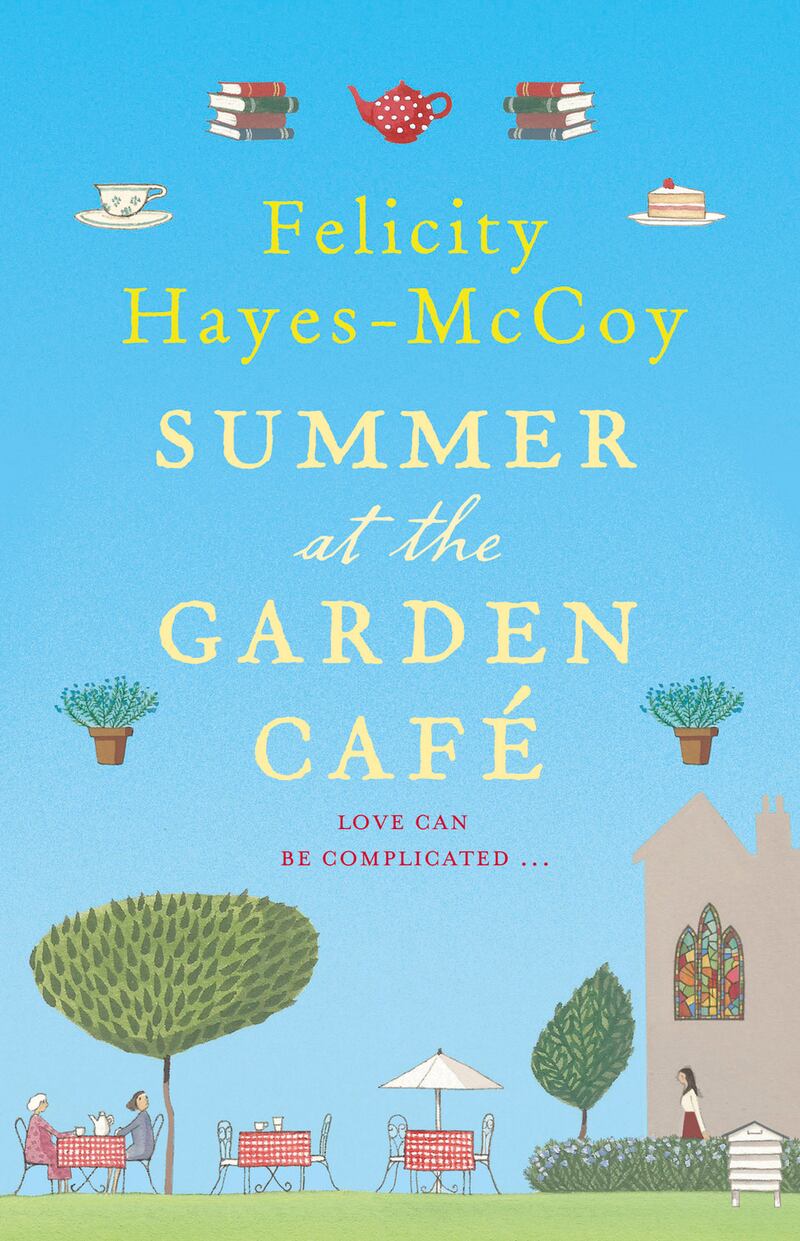It was while eating lemon-drizzle cake in the cafe of London’s Charles Dickens Museum that I conceived the idea of an Irish librarian who gives up her career for love and, 25 years later, discovers that her marriage has been a sham. What would she do? Where could she go? What are the consequences of ditching your life and starting off again where you began?
Hanna Casey, my middle-aged protagonist, grew up on the fictional, west-coast, Finfarran peninsula. When in London, training to be an art librarian, she married a successful barrister. And when she discovers her husband’s long-term affair with a colleague, her impulse is to take their teenage daughter, Jazz, and bolt. In the first book of the series, The Library at The Edge of The World, Jazz, who’s had to adjust to completing her schooling in Ireland, has spread her wings and left; and Hanna, stuck in a dead-end job as a local librarian, is still living in the back bedroom of her monstrous widowed mother’s retirement bungalow.
My grandmother's oral, Irish-language tradition, married to a love of Ireland's English-language, literary tradition, has shaped me as a writer
By the second book, Summer at The Garden Café, Hanna has achieved a degree of independence and reintegration into the community, and begun a new, delicately-balanced, love affair; but Jazz, now back in Finfarran, is becoming increasingly troubled by the trauma of her parents’ divorce, and her own lack of roots. The third, which I’m writing at the moment, continues the Casey family story while drawing forward other characters met in the previous books.
In one sense they’re pastoral comedies, feelgood commercial fiction from an author whose background includes TV drama and radio soap. But the underpinning challenge was to produce an accurate, unsentimental picture of contemporary Ireland, and to drill down into the realities of modern rural life.
My starting point was a map. It’s the physical world they live in that shapes the individual characters in Finfarran’s scattered communities, and their shared social and cultural inheritance that brings them together as a unit. So I sketched the detail of the peninsula on the back of a napkin that day in the museum cafe, and the act of creating their setting informed both characters and plot.

When I was a child in Dublin in the 1960s, the city was half the size it is today, and large numbers of Dubliners would return each summer to the countryside, to work on family farms. My own experience of rural Ireland comes both from childhood visits on rattling trains to my country granny, and from my current peripatetic life between London and the west Kerry Gaeltacht which, while utterly modern socio-economically, retains a profound awareness of the past. And my love of the particular colours and patterns of Irish speech comes both from a lifetime of listening in two languages, and a sense of the inherent rhythmic differences between urban and rural life.
My father’s family came from Galway and my mother’s from Enniscorthy: the landscape I’ve created for Finfarran contains suggestions of both places. And, while the older characters owe much to my childhood memories, others – in particular the younger ones – reflect the exuberant enterprise and creativity that, having returned to live in Ireland, I see around me today.
During one of her weekly trips in the peninsula’s mobile library van Hanna realises that “for millennia, written words had conveyed dreams, visions and aspirations across oceans and mountains, and that as she steered between puddles and potholes she was part of a process that stretched across distance and time, linking handwritten texts from Egypt and Mesopotamia with the plastic-covered novels, CDs, and celebrity cookbooks lined up in the back of her van.” It’s a turning point in her search for independence, when she realises that her fear of small-town gossip and her sense of failure have twisted the values and aspirations that brought excitement to her youth.
Like me, Hanna belongs to a generation that, for lack of career opportunities, went abroad to find a future; and the kids with whom Jazz went to school still live with the idea of emigration as a threat, not a choice. But because emigration has long been part of the Irish experience, our isolated rural communities also have a powerful sense of being linked to a worldwide diaspora. Those links, forged and maintained from time immemorial through storytelling, voyaging and books, are now further supported by telecoms and social media.
So, in a sense, Lissbeg Library, where Hanna works, is a metaphor for Ireland’s cultural consciousness. Though I’m not sure I could have conceived it that way without the experience of living in a Gaeltacht community that places such a high value on the preservation of its distinctively local culture through the passing on of stories, place names and poems.
I first visited the west Kerry Gaeltacht aged 17, sent there to study Irish and gripped by a love of folklore. Since then I’ve come to realise that my earliest experience of storytelling came from my grandmother’s oral, Irish-language tradition; and that inheritance, married to a love of Ireland’s English-language, literary tradition, has shaped me as a writer. Those contrasts heighten experience, and each time life and work take me from Ireland to London and back again, there’s a brief window – maybe just on the journey from the airport – when everything seen and heard becomes heightened too. For an author, that’s gold dust.
Starting the series by creating Finfarran itself was a matter of instinct: when you’ve written for television you’re constantly aware of the narrative value of the physical, and of the importance of consistency in an episodic series. So making a map was the logical starting point. And, although I redrew it tidily soon afterwards, I still keep the original paper napkin. It never fails as a source of inspiration, despite – or maybe because of – the crossings-out and corrections, and faint indications of lemon cake consumed.
Summer at the Garden Café by Felicity Hayes-McCoy is published by Hachette Ireland, £13.99
















